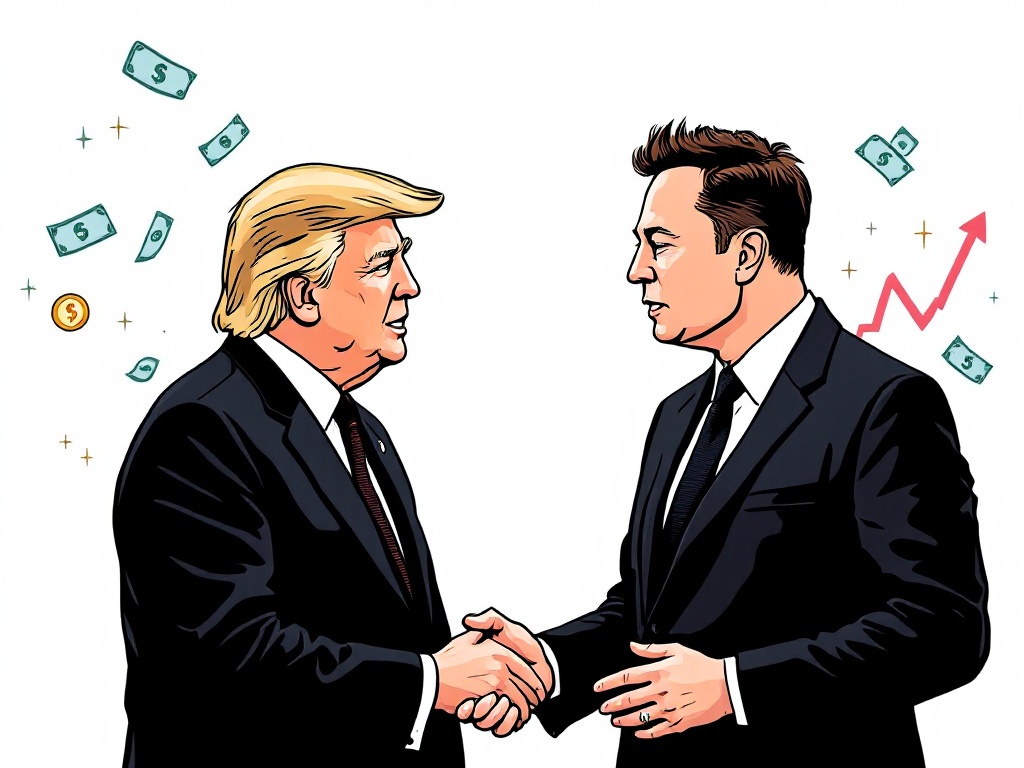Trump's DOGE Dividend Proposal Stirs Inflation Concerns

Washington, D.C., Friday, 21 February 2025.
President Donald Trump’s proposal for a $5,000 ‘DOGE Dividend’ checks, supported by Elon Musk, sparks debate in Washington over inflation risks amid an economic rebound.
Proposal Details and Timeline
In a significant development on February 19, 2025, President Donald Trump announced he is considering a proposal to distribute $5,000 ‘DOGE Dividend’ checks to American taxpayers [1][5]. The initiative, originally proposed by James Fishback, CEO of Azoria Partners, would allocate 20% of projected savings from the Department of Government Efficiency (DOGE) to approximately 79 million tax-paying households [2][3]. The ambitious plan aims to distribute these funds after DOGE’s scheduled expiration in July 2026 [2], with Trump stating that the concept of giving ‘20% of the DOGE savings to American citizens, and 20% to paying down debt’ is under active consideration [7].
Economic Impact and Funding Sources
The proposed dividend relies on DOGE achieving ambitious savings targets of $2 trillion, from which $400 billion would be allocated for taxpayer distributions [1][2]. However, current DOGE savings stand at just $55 billion [2], with senior policy experts expressing skepticism about the feasibility of the larger goal. Jessica Riedl of the Manhattan Institute points out that given the current limited federal spending reductions [5], the impact would be minimal, stating that ‘Americans could possibly take their dividend to Starbucks for half off of one coffee’ [5].
Political and Economic Challenges
The proposal faces significant hurdles, including congressional approval and mounting concerns about inflation [4]. Economic experts, including Preston Brashers from The Heritage Foundation, warn that such stimulus-like payments could cause inflation to ‘come back with a vengeance’ [4]. This comes amid broader concerns about Trump’s fiscal policies, as his administration is already exploring tax relief measures with potential costs estimated between $5 trillion and $11 trillion by the Committee for a Responsible Federal Budget [1].
Implementation and Oversight Questions
Adding to the complexity, DOGE’s operational authority remains under legal scrutiny [2], with the White House clarifying that Musk has no formal authority over government decisions [6]. The proposal’s implementation faces additional challenges as DOGE continues to navigate legal disputes concerning its access to sensitive federal data, particularly from the Treasury and Education Departments [2]. While Fishback argues the dividend would ‘incentivize many to re-enter the labor force in 2025’ [4], the practical execution of such a massive financial distribution remains uncertain [5].
Sources
- www.forbes.com.au
- www.forbes.com
- www.axios.com
- kfoxtv.com
- www.washingtonpost.com
- m.economictimes.com
- www.pennlive.com